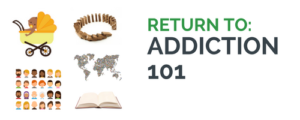Substance use disorders are among the top public health problems in the U.S. and other nations around the world.
KEY FACTS
- Substance use can have an impact on health for the user, their social network, their community, society, and the economy.
- According to studies involving clinical experts and scientists (Nutt et al., 2010), alcohol is considered to be the most harmful drug due its indirect effects involving other people, followed by heroin and cocaine. Alcohol is also considered to be the third most harmful in terms of effects directly impacting the user, after heroin and cocaine.
- The impact of substance use may be reduced with early intervention (Dennis et al., 2004). Alcohol and other drug use is the principle contributor to disability-adjusted life years lost for young people (Mokdad et al., 2016).
- Alcohol use was responsible for 95,000 deaths and 2.8 million years of potential life lost in the United States from 2011-2015 (Esser et al., 2020).
- Early intervention may help minimize substance use disorder in adulthood, as 90% of adults with substance use disorder first used before the age of 18, and 50% started before the age of 15.
This section presents personal health impacts, global health impacts, economic impacts, other harms impacts, and the benefits of early intervention for substance use disorders.
PERSONAL HEALTH IMPACT
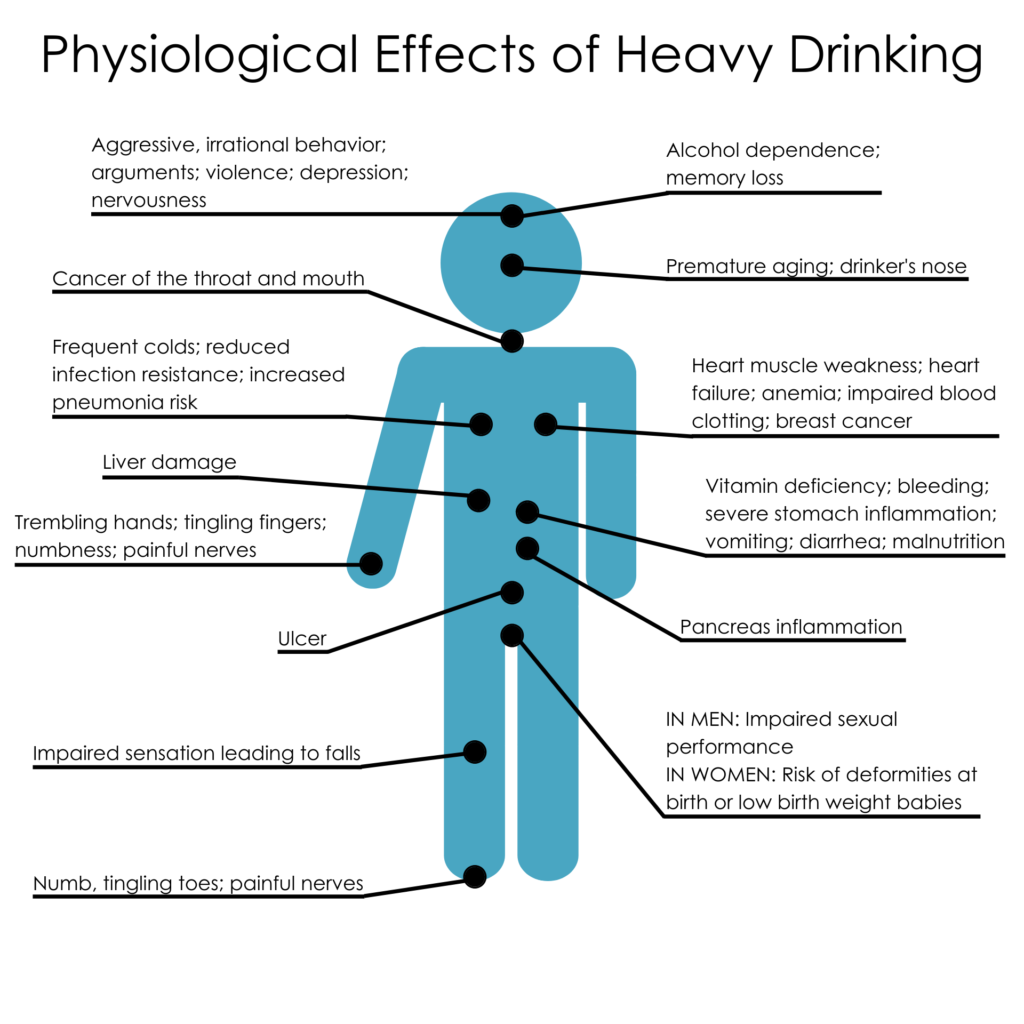
Other Harms Associated with High-Risk Drinking Include Increases In:
| Psychomotor impairment | Cardiovascular disease |
| Neuropsychiatric conditions | Gastrointestinal conditions |
| Emotional changes | Infectious disease (e.g., HIV) |
| Low birth rate in children | Maternal and perinatal conditions |
| Central Nervous System (CNS) effects | Acute toxic effects |
| Psychosocial effects | Accidents |
| Poor impulse control | Self-inflicted injury |
| Cancer | Violence |
| Diabetes | Overdose |
GLOBAL HEALTH IMPACT
Substance use disorders account for a high amount of disease burden throughout the world. Neuropsychiatric illnesses are the largest contributors to the global burden of disease, among which substance use disorders make up the second largest proportion of this burden (4%) after depression. Alcohol is the leading risk factor for death for men of working age worldwide.
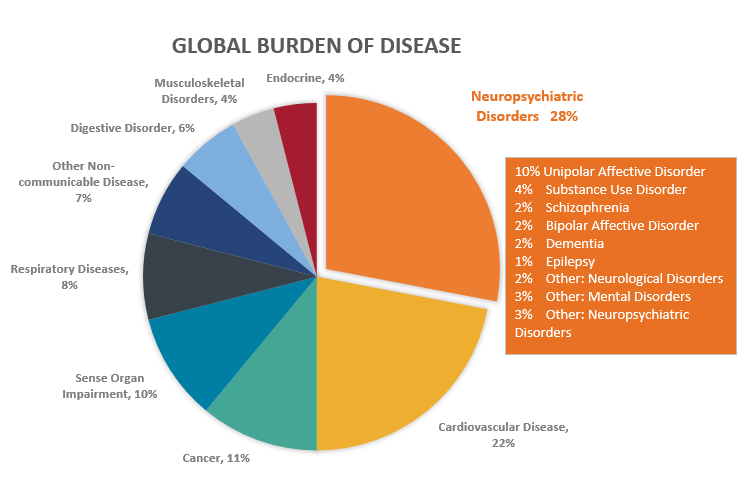
SOURCE: Prince et al. (2007)
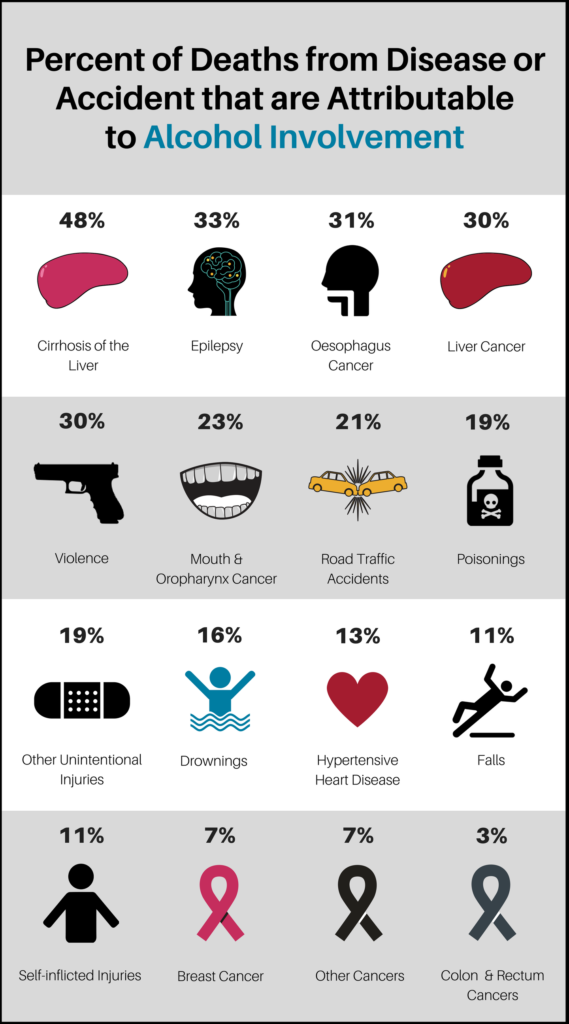
ECONOMIC IMPACT
United States: Costs of Substance Use
In 2007, the direct and indirect costs of illicit drug use (excluding alcohol) totaled almost $200 billion. These numbers include costs associated with crime, healthcare, and loss in productivity due to drug use.
These costs are greater than the direct and indirect costs attributable to diabetes, obesity, and smoking (USDOJ, 2011). The cost attributable to alcohol is estimated to be an additional $224 billion (Bouchery, Harwood, Sacks, Simon, & Brewer, 2011).
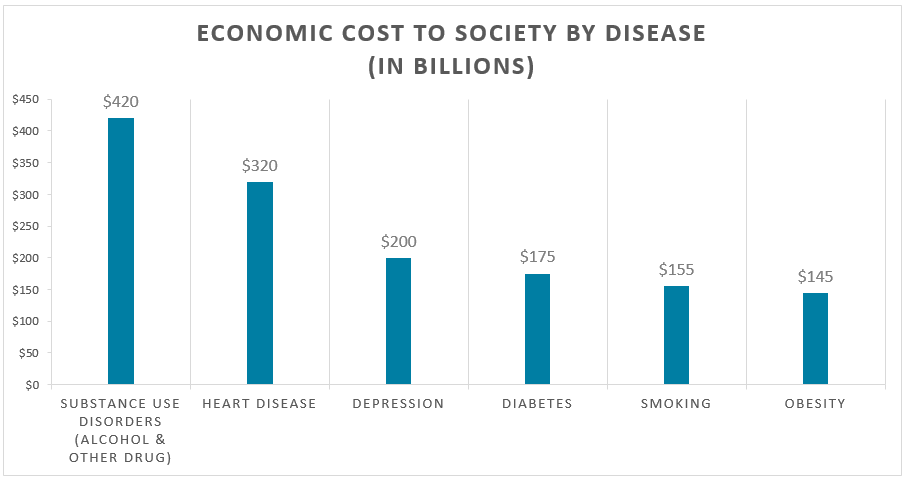
OTHER HARMS IMPACT
Harms to Those Who Use and Harm to Others by Substance Type
Alcohol is considered by experts to be the most harmful drug to other people (e.g., through assaults, domestic violence, etc.), followed by heroin and crack cocaine.
In a study that had experts rate the amount of harm to the user and others caused by a variety of drugs, alcohol was rated as producing the greatest economic cost, injury, and family adversity, while heroin was associated with the most crime. These factors were the largest contributors to the societal consequences of substance use (Nutt et al., 2010).
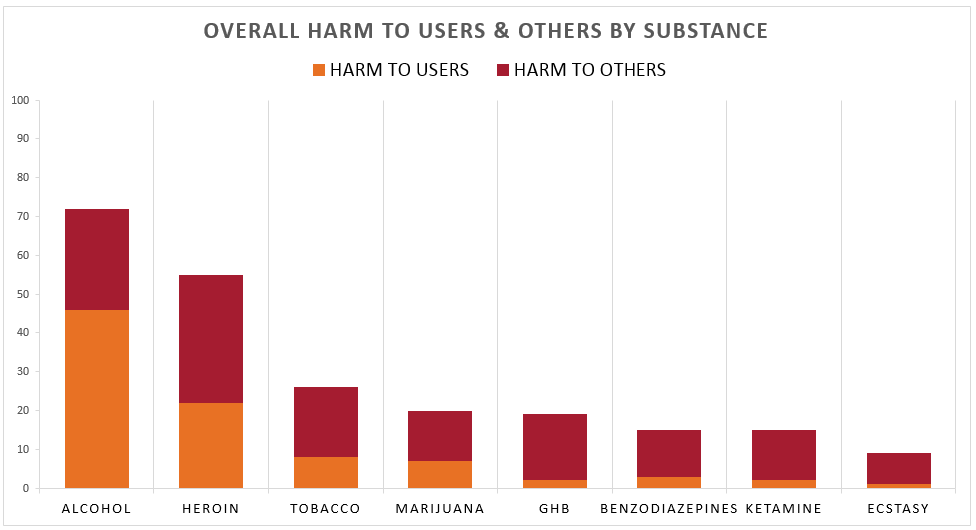
REDUCING THE IMPACT OF SUBSTANCE USE DISORDERS
The impact of Substance Use Disorder Can Be Reduced with Early Intervention in the United States (NDIC, 2017)
- Substance use disorder treatment costs the country approximately $36 billion per year in healthcare and approximately $417 billion per year overall
- On average, substance use disorder treatment costs $1,583 per patient and is associated with a cost offset of $11,487, which represents a greater than 7:1 ratio of benefits to costs
- Cost-to-Benefit of Early Intervention
- Every $1 in treatment saves $4 in healthcare costs
- Every $1 in treatment saves $7 in law enforcement and other criminal justice
- Medicaid cost reduction
- $185-$192 per member per month after receiving a brief intervention
- $238-$269 per member per month in costs associated with inpatient hospitalization from emergency department admissions

